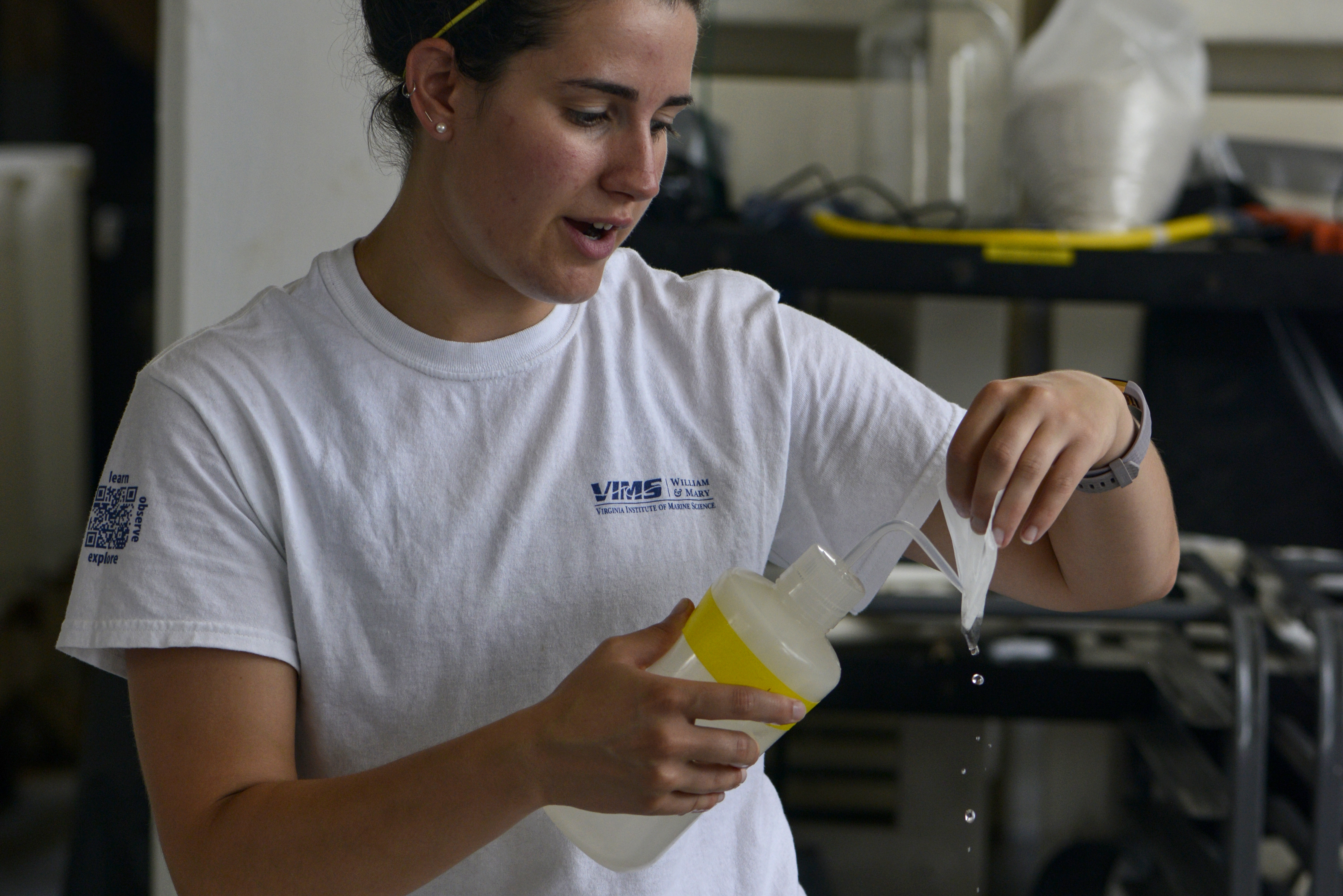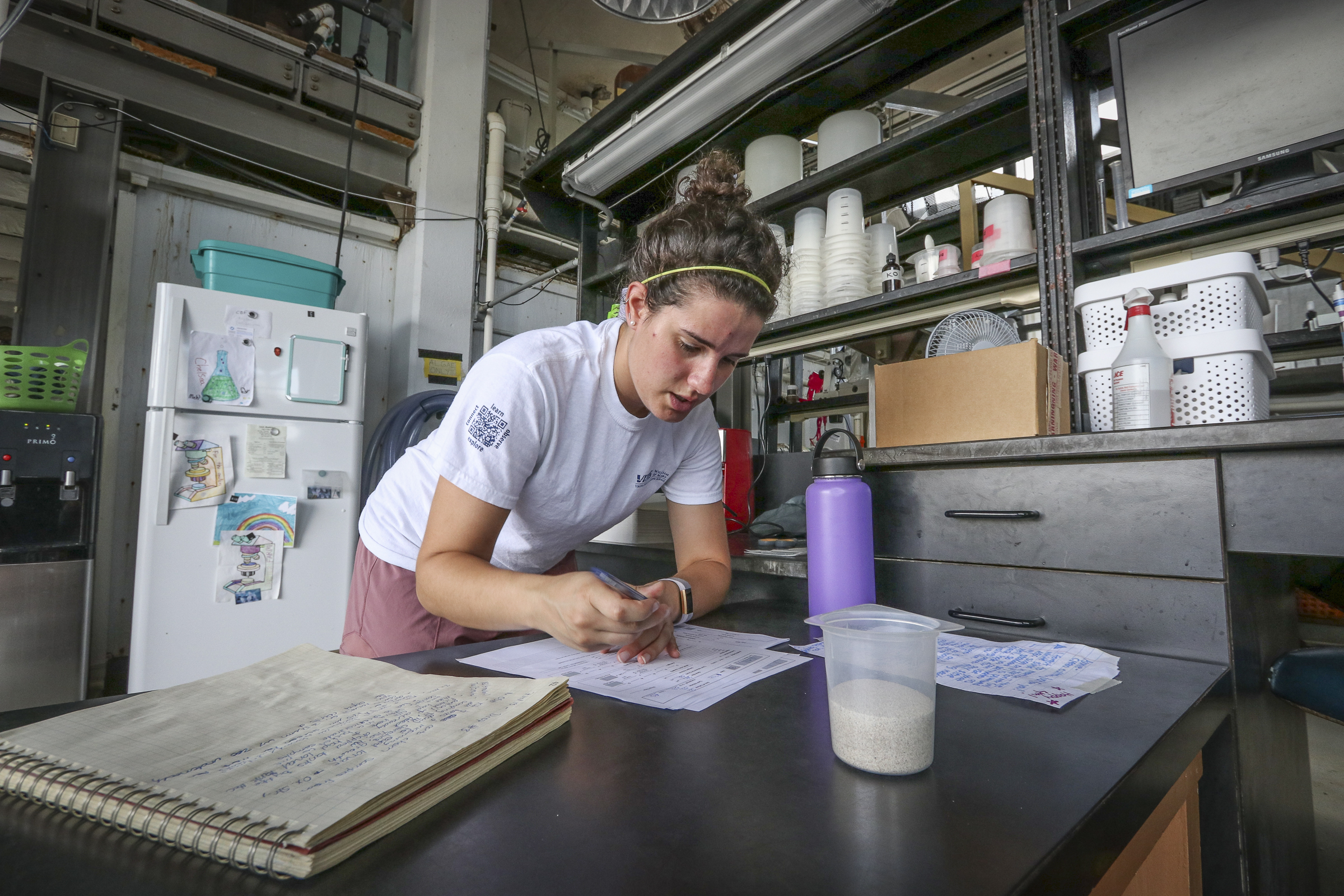"Aren't they cute?" the researcher asks.
Barely larger than grains of salt and pepper, baby oysters in the light of the microscope twirl in circles, darting to and fro. These oyster larvae have just been filtered out of the tanks where they've spent the first two weeks of their lives.
To the untrained eye, the larvae all look alike, vaguely resembling black-eyed peas, but the researchers can distinguish the oysters’ shell shapes, gut color, and swimming patterns, and they use this information to keep track of the oysters' health.
CARRYOVER EFFECTS
"With humans, we know that how you're nurtured when you’re young can have long-lasting consequences into adulthood, and it's the same thing with the oysters," Rivest says. The properties of the water that oysters live in when they are young, like pH and salt level, can also have long-term effects on oyster growth. Researchers call this the carryover effect—how the conditions an oyster experiences early in life can influence its ability to adjust to its surroundings as an adult.
Oyster growth can be helped or hindered by water conditions, like when water temperature, pH, or salinity are too high or too low. When the oysters are struggling, they don’t grow as fast as healthier oysters in more moderate conditions. The same might be true when adult oysters are placed in water conditions that differ from those they experienced as larvae.
VIRGINIA'S OYSTERS
Virginia leads the East Coast in oyster cultivation, and this business is one of the most rapidly developing sectors of Virginia's shellfish industry. Oysters raised in Virginia's hatcheries are sold to farmers throughout the East Coast and the Gulf Coast, where they will grow in a wide variety of water conditions that are often very different from the conditions they first experienced at the hatcheries. As they grow out in open waters, the oysters may be exposed to a wide variety of water salinities depending on their location.
“We’re looking at how the water conditions that the oyster larvae experience in their earliest life stages influence the way they grow and perform once they’re out at different locations in the Bay," Rivest says.
Carryover effects could have two possible forms. Water conditions could affect aspects of the oysters’ growth and development. Alternatively, higher death rates from stressful conditions could mean that the group as a whole might be less resilient.
"We don’t yet know what that connection is between the conditions they experience in the hatchery and how that affects their performance for farmers,” says Rivest.
HEALTH IN HATCHERIES
By studying the link between water conditions and adult oyster growth, researchers hope their results can be applied by aquaculture and restoration practitioners to minimize any negative carryover effects. Click one of the storylines below to learn more about different aspects of the research.


